While a wood species’ natural properties play an important role in determining the timber cladding’s durability, they’re only part of the equation. In real-world conditions, wood’s performance and lifespan outdoors depends just as much on climate, exposure, installation, and maintenance as it does on the material itself.
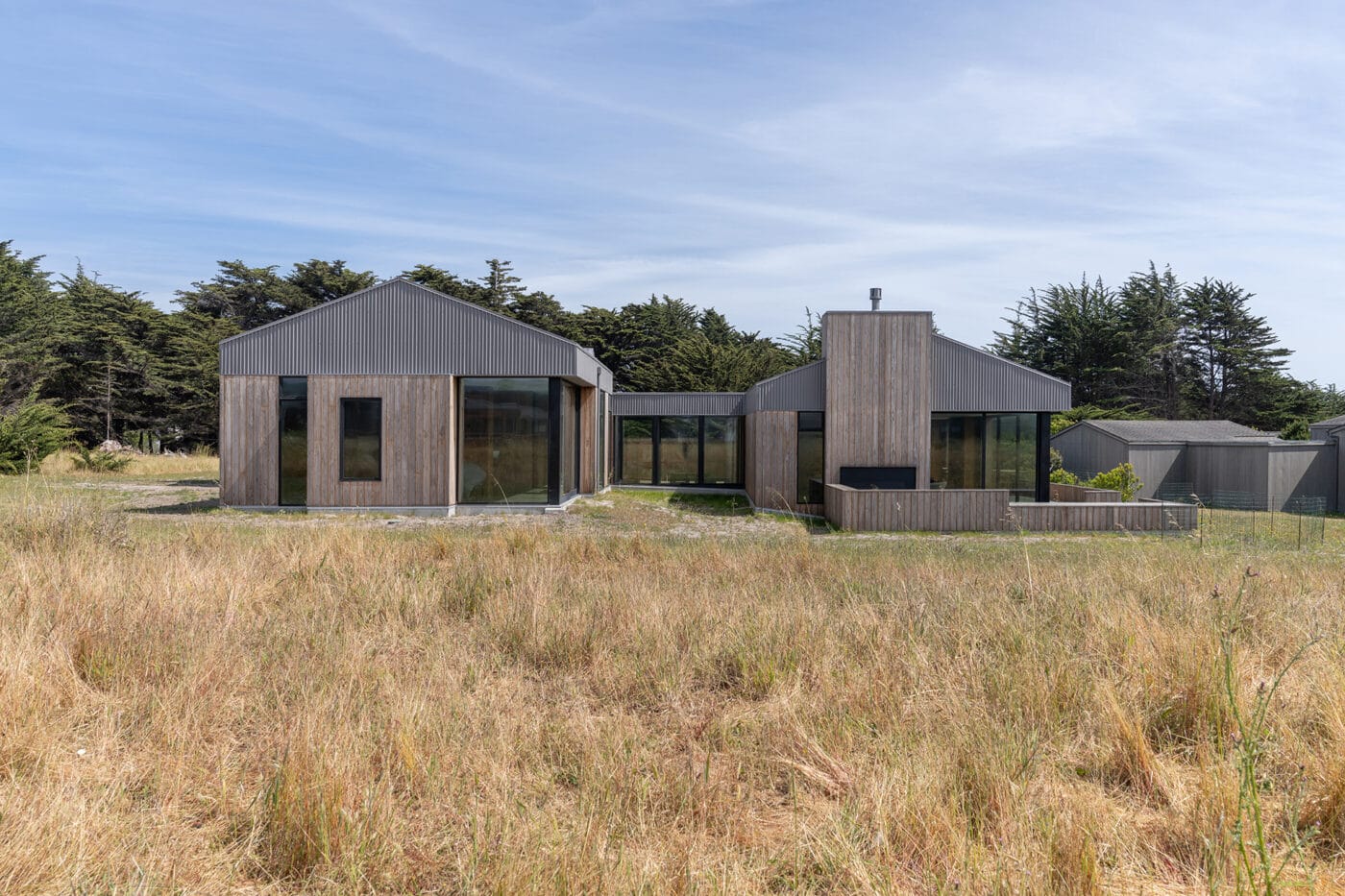
Yes, some wood species are more durable than others and therefore a better option for outdoor applications. You can explore the differences between species and how they’re classified in terms of durability in our guide to wood durability classes.
However, wood is a natural material and that’s part of its beauty. But when exposed to the elements, there needs to be some precautions taken. Below, we outline the most common external factors that influence timber cladding’s durability and lifespan outdoors, and more importantly, how to protect against them.
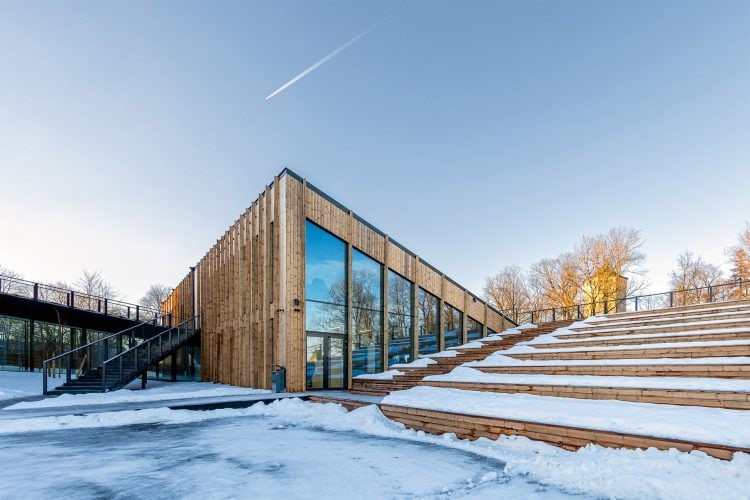
Wood exposed to outdoor conditions faces constant expansion and contraction due to temperature changes. Freeze-thaw cycles, especially in colder climates, can cause moisture inside the wood to freeze and expand, leading to cracks and structural damage over time.
Solution? Look for thermally modified wood. Wood’s physical and chemical properties change during thermal modification. When it’s heated, the wood releases moisture and its chemical composition is transformed. It lowers the wood’s absorbency, meaning that exposure to moisture no longer causes it to swell as much. It also improves dimensional stability, so the wood expands and contracts less in outdoor conditions.
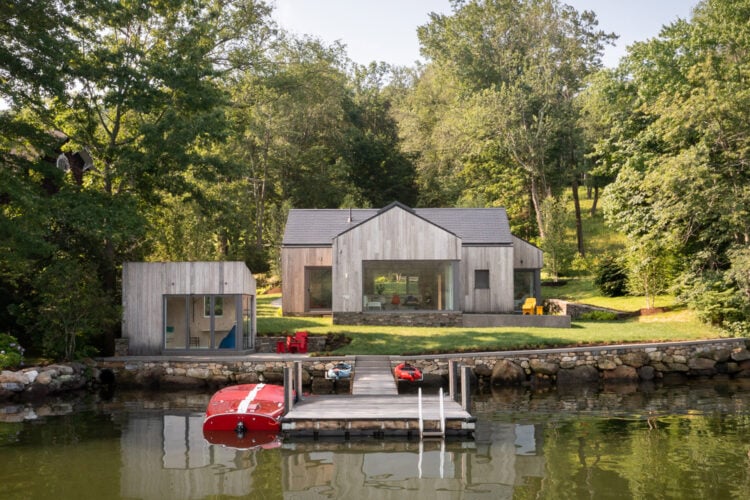
Frequent rain, snow, or consistently high humidity can saturate wood, increasing the risk of rot, mold, and fungal decay. Areas where water tends to pool or where airflow is restricted can accelerate this degradation.
When installing timber cladding or decking, ensure sufficient airflow behind the boards. Leave an air gap of at least 25 mm behind the boards to prevent moisture damage by allowing for vertical air flow.
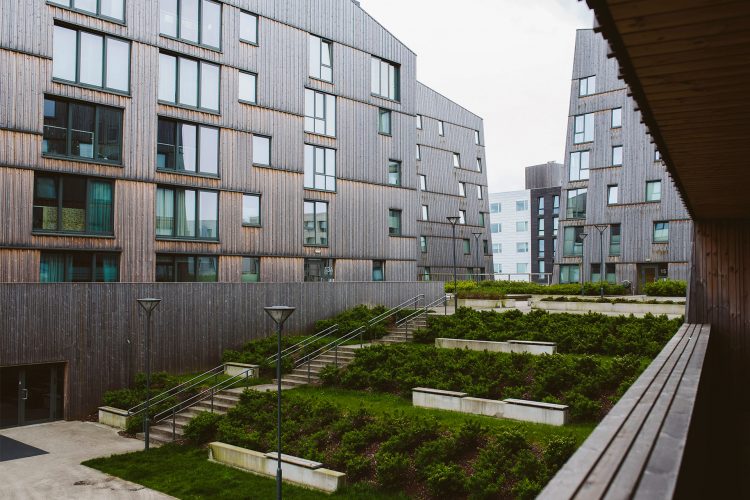
UV rays break down lignin, a key component that holds wood fibers together. This leads to the graying of the wood surface. The process starts immediately after the products are installed and can take anything from a few months to a few years depending on the intensity of UV radiation and water exposure they’re subjected to.
Any color changes may be uneven. Each board ages in its own way, and different sides of a building’s façade will also age differently depending on the sun and rain they’re exposed to.
To protect the wood, apply UV-resistant oils or finishes regularly. Also note that with thermally modified wood, the graying of the surface doesn’t affect its structural integrity. It’s rather just an aesthetic change due to exposure to sunlight.

Wood in direct contact with soil is more likely to absorb moisture continuously, creating conditions for decay. Improper drainage or lack of spacing between boards can also trap water, causing even naturally durable wood to fail prematurely.
So, elevate structures off the ground where possible and install with adequate spacing for water runoff. We advise leaving a gap of at least 300 mm between the ground and the cladding.
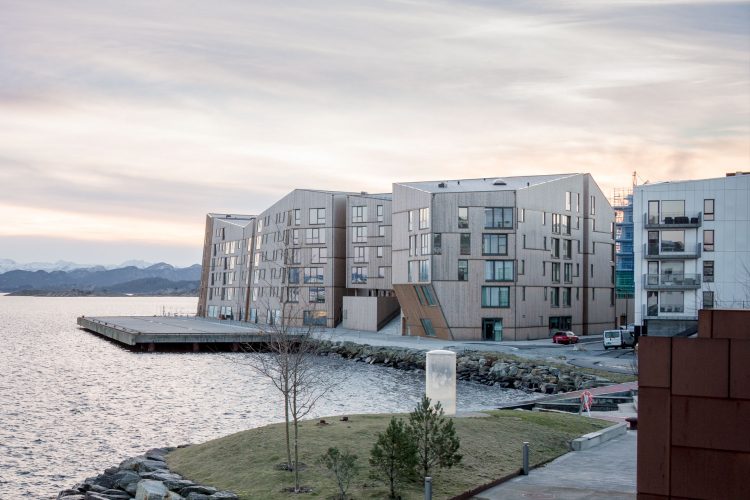
In coastal environments, salt-laden air and water can be particularly harsh on wood, increasing moisture absorption and surface breakdown. Urban pollution may also accelerate wear and discoloration. Insect activity (e.g., termites, carpenter ants) and fungal presence in certain climates are additional biological threats to consider.
Using naturally durable wood species or thermowood products that are more resistant to decay and insect attack can be beneficial in coastal areas.
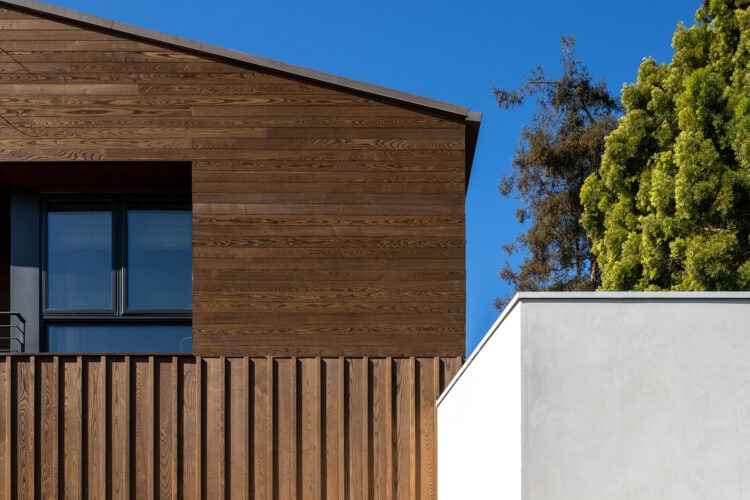
Even highly durable wood can underperform if installed poorly. Incorrect fasteners, lack of sealing on end grains, or insufficient ventilation behind cladding can compromise the wood’s performance and lifespan.
Make sure you maintain proper ventilation and drainage behind the boards and use corrosion-resistant fasteners like stainless steel to improve the timber cladding durability.
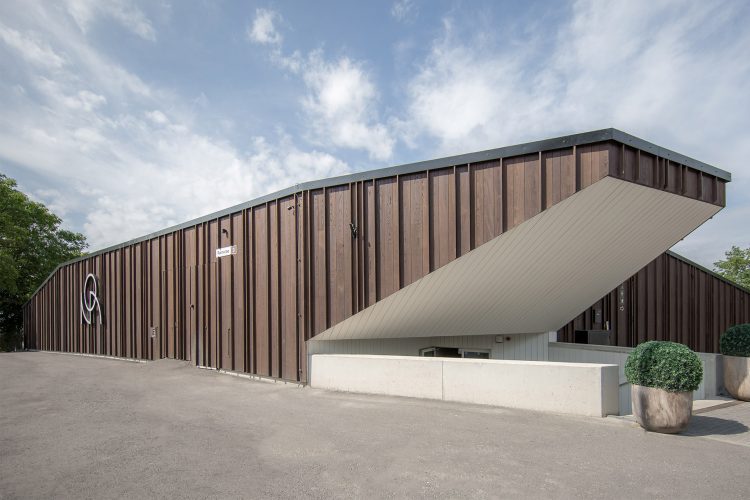
Wood is a natural material and that is part of its charm. That also means durability is not a “set it and forget it” property. Without regular maintenance such as cleaning, resealing, and repairing minor damage, even the best wood materials will degrade faster than expected.
Luckily, natural uncoated thermowood does not require much special care. Thermory thermowood cladding boards are durable and remain weatherproof for decades, even in the most demanding climates. Just make sure you clean surfaces regularly to remove dirt and organic buildup.
Thermowood offers durability, beauty, and sustainability in a way few natural materials can match. But to truly enjoy its benefits outdoors, it’s essential to consider the environment your wood will live in. By choosing the right species and understanding how exposure to the elements affects timber cladding durability, your exterior wood can stay strong and stunning for decades to come.
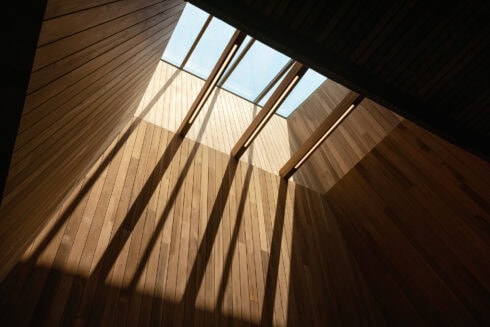
The Thermory Design Awards 2025 once again shine a spotlight on the most inspiring uses of thermally modified wood in architecture and design. This year’s...
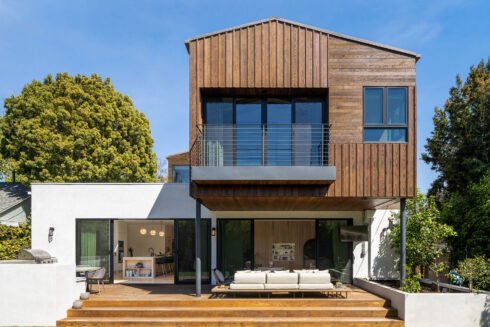
Yes — and you absolutely should. Mixing cladding...
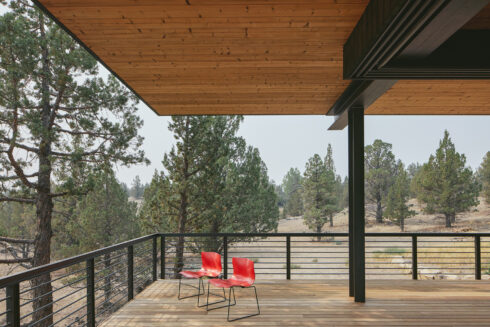
When designing...
...
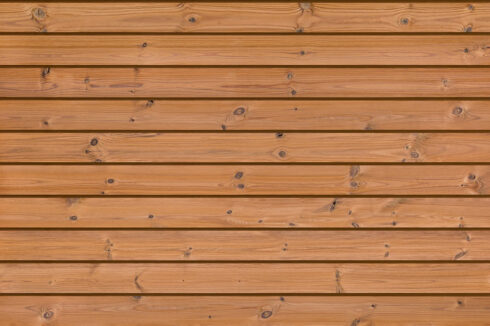
Shiplap cladding...
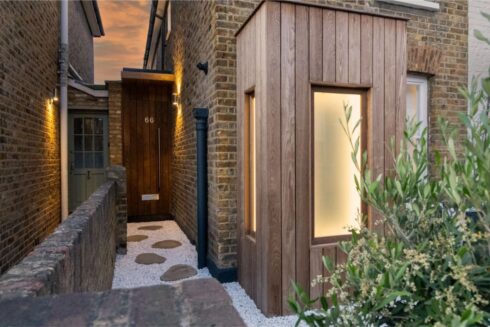
The most...
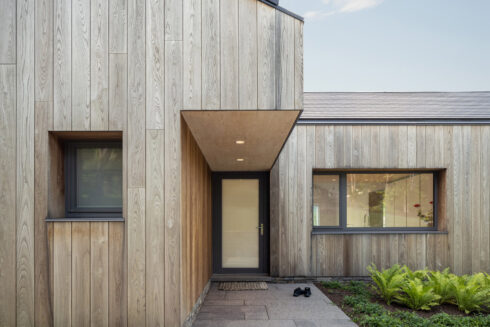
Contemporary...
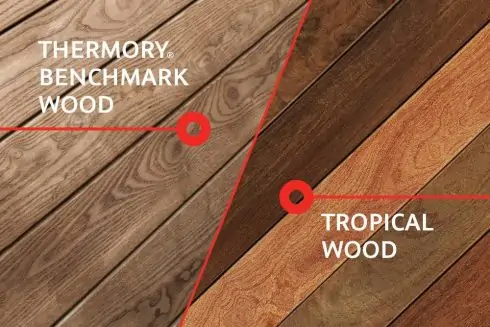
As the construction and design industries evolve, so does the demand for sustainable, high-performance building materials. For over 25 years, Thermory has...
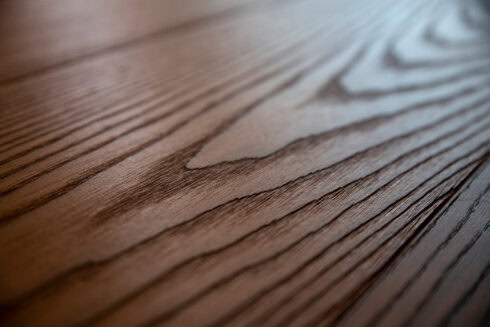
Picture a wood that balances elegance, durability and versatility – a natural material that not only meets your demands but also exceeds your...
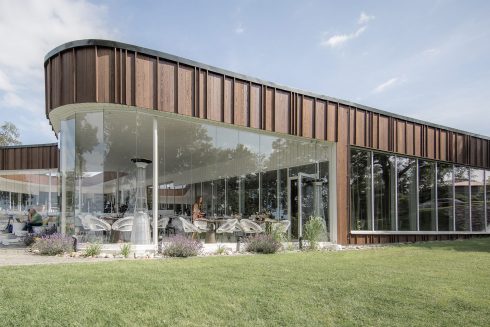
Combining different wood species, finishes and profiles brings variety to any interior or exterior design, delivering a tantalizing injection of texture and...
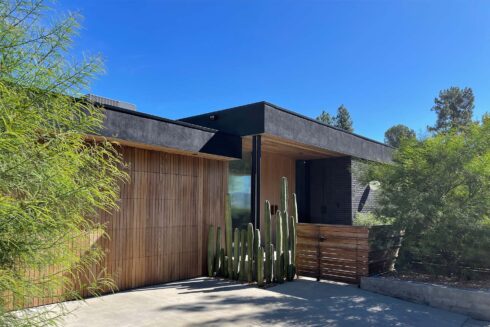
We were curious about the architecture trends and the popularity of timber in Australia, so we asked our down under partner, McCormacks Australia, to tell...
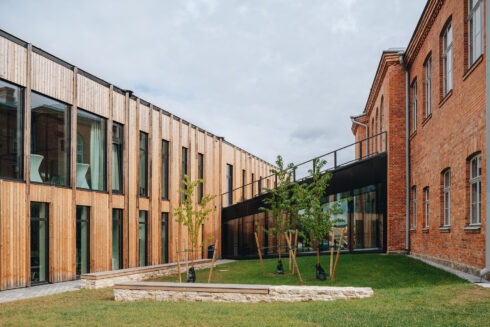
With the EU, US and many other countries aiming to achieve carbon neutrality by 2050, sustainability is not just a construction trend anymore, but it’s...
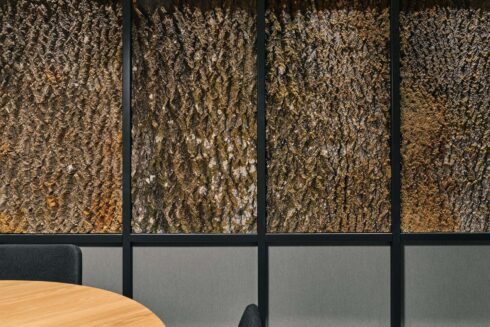
In the quest to shift our world towards more sustainable practices and circular processes, designers are increasingly turning their attention to...
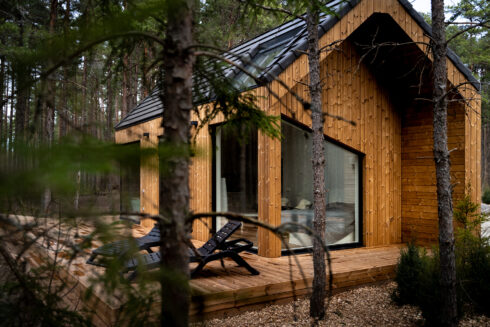
Sometimes, the best place to unwind and get away from it all is a secluded forest cabin in breathtaking surroundings. Find inspiration for your next...
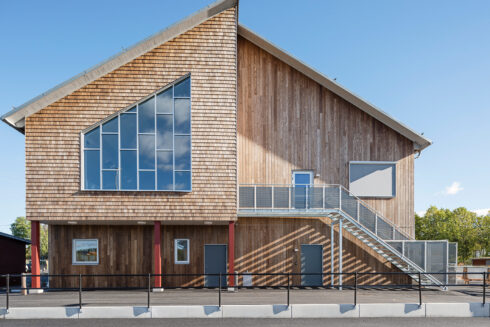
When it comes to designing and constructing educational spaces, choosing the right materials is crucial. There has been a growing trend towards...
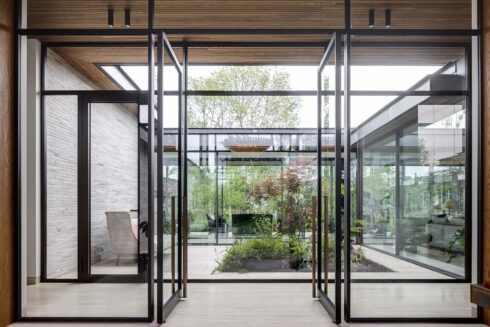
As architects and landscape designers, creating indoor outdoor living spaces that are sustainable and eco-friendly is more important than ever. With a...
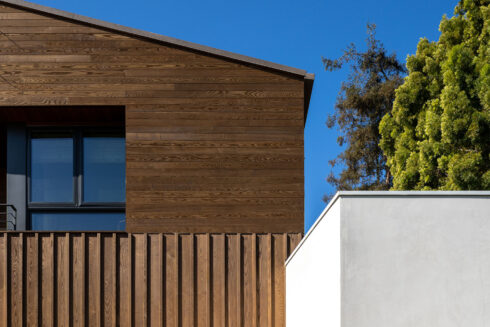
Wood is a highly valuable material and although it grows abundantly, we must treat this natural resource with respect and create value from even the smaller...
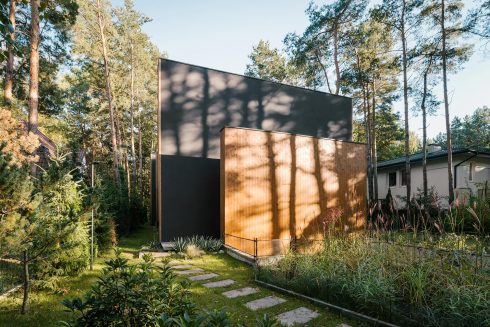
From intimate spaces like our homes to public urban areas, the environment surrounding us has a big effect on our well-being. Recent turbulent years have...
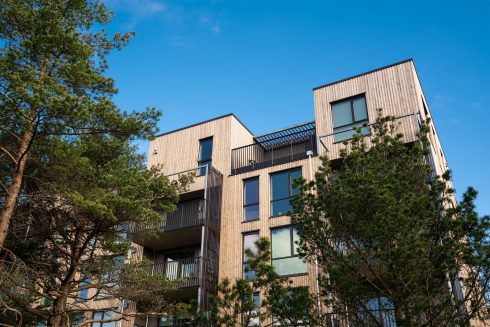
Finding the best solution to clad buildings is important for several reasons – as well as defining the look and feel of your design, it also has a major...
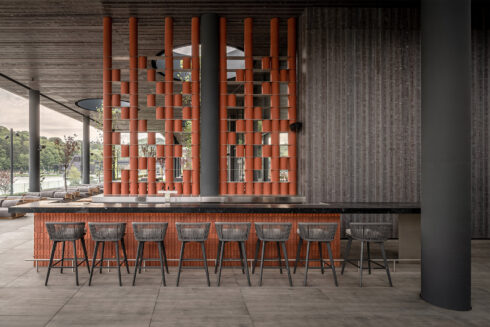
Thermory Design Awards is part of Thermory 25 celebrations for acknowledging and rewarding our...
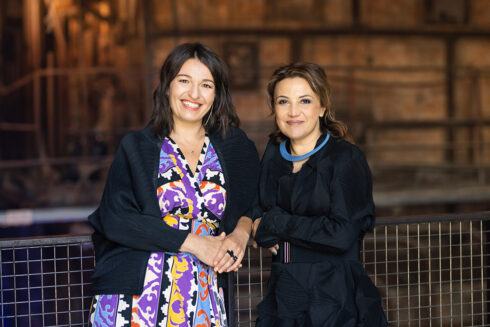
Curators of Tallinn Architecture Biennale 2022 exhibition “Edible ; Or, The Architecture of Metabolism”, Lydia Kallipoliti & Areti...
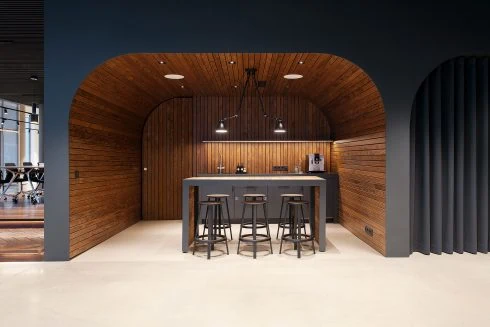
The aim of biophilic design is to create buildings and spaces that enable harmonious, naturally enjoyable experiences for their users by promoting the...
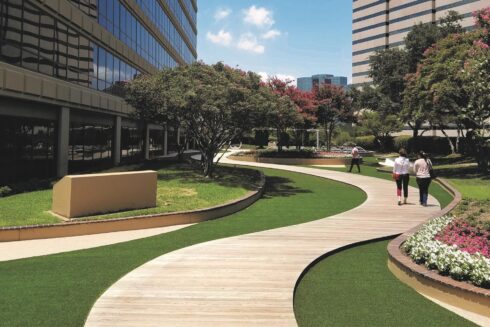
The purpose of biophilic design is to create spaces that deliver benefits for both human health and the environment by nurturing people’s innate affinity...

Natural wood can be used in many different ways. The beauty and versatility make wood unequalled building material. As both an interior and exterior design...
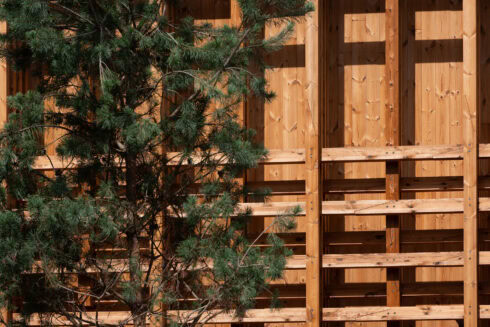
When it comes to...
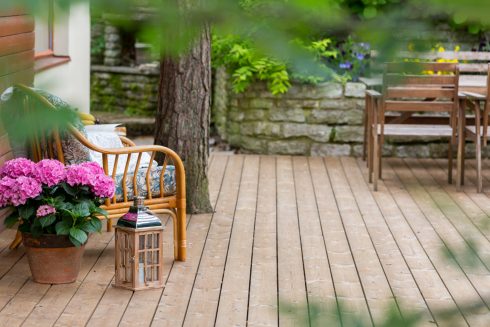
Home is where the heart is – a place where the whole family can feel safe and warm. The building materials you choose should enhance this feeling and...
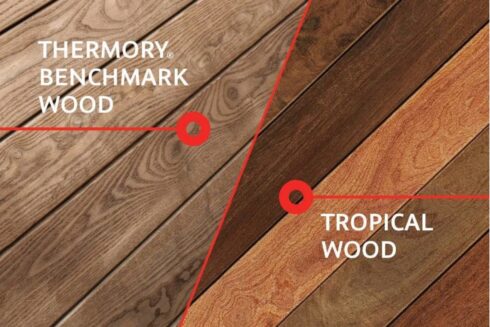
For decades, tropical hardwoods have been prized for their density, durability, and rich appearance. But their popularity comes at a high cost. Many of...
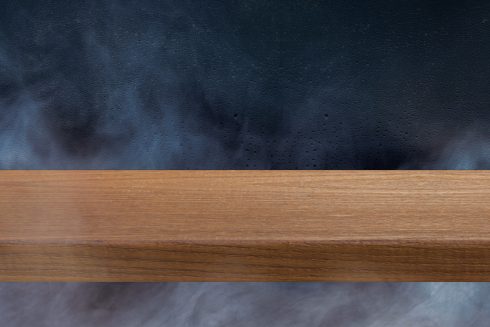
Thermally modified wood, often referred to as thermowood, is real wood enhanced using only heat and steam to improve its durability, dimensional stability,...
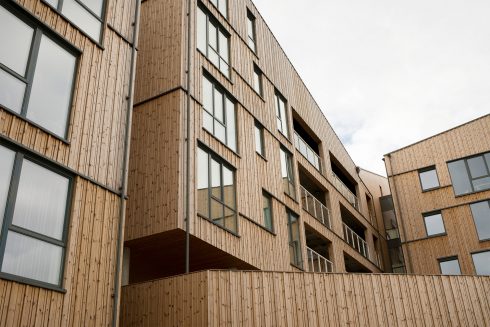
Thermally modified wood offers a unique combination of beauty, durability, and versatility. If you’re searching for fresh exterior cladding ideas,...
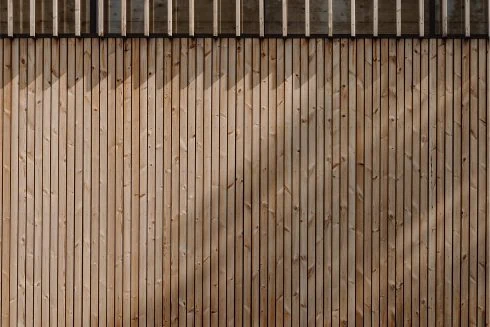
With rising concerns about climate change, the world community’s responsibility to reduce our carbon footprint rests with each and every individual and...
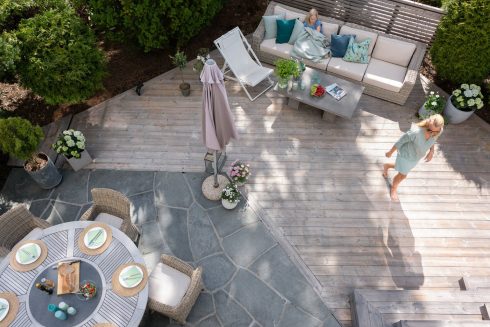
Wood is a natural material – and that’s part of its magic. Over time, its appearance changes, especially when exposed to the elements. Thermory’s...
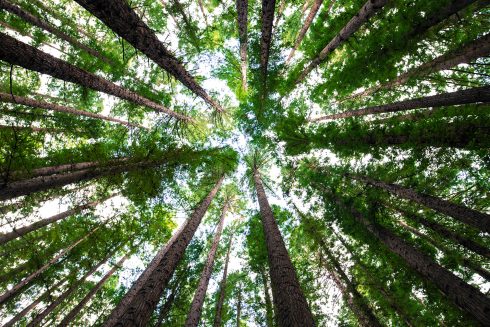
Great design is more than just aesthetics—it’s about how a space makes you feel. Increasingly, research confirms what many have intuitively known: wood...
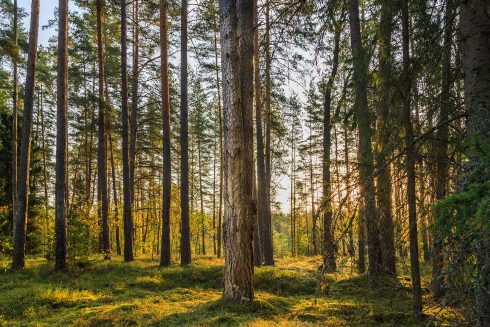
Ensuring the highest quality with the smallest possible ecological footprint and responsible use of resources are all principles that we consider important...
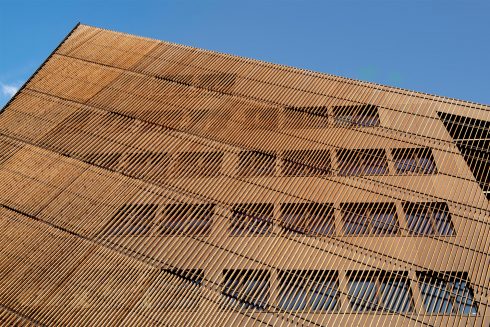
Throughout the history of architecture, surely no other material has been as influential as wood. It’s rare to see a building that’s been produced...
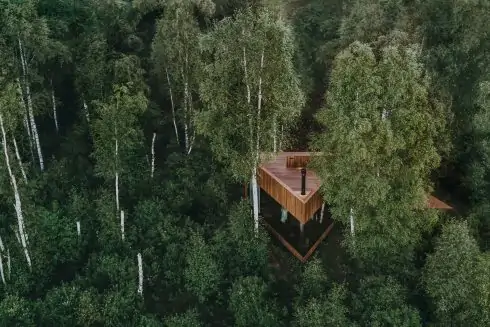
A trend is taking root in the worlds of architecture and interior design based on using natural materials and living plants to better...
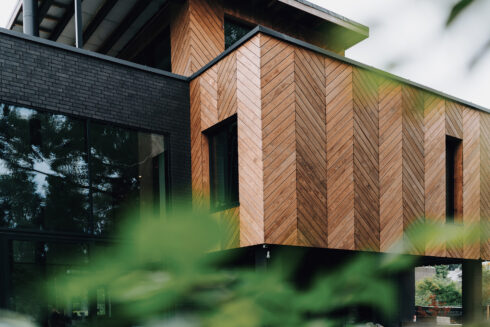
If you’re considering which wood types to use for a renovation or construction project, there are several considerations that may influence your decision...
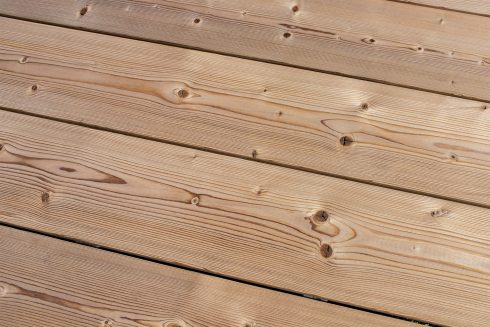
The wood-paneled interiors so common to mid-century homes have become sought after again, as many seek the warm, cozy feeling that the natural material...
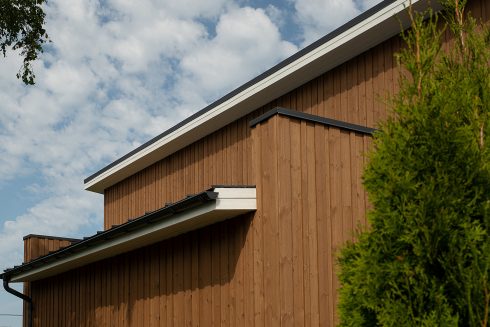
To ensure that your Thermory cladding retains its natural warm and authentic character, it’s important to apply the correct maintenance techniques. The...
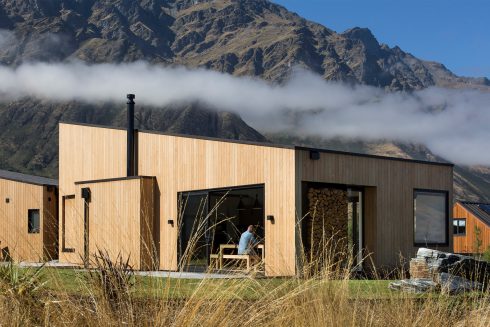
No matter where you live when you’re choosing a decking or cladding material, you’ll have to be mindful of how that material will change over time...
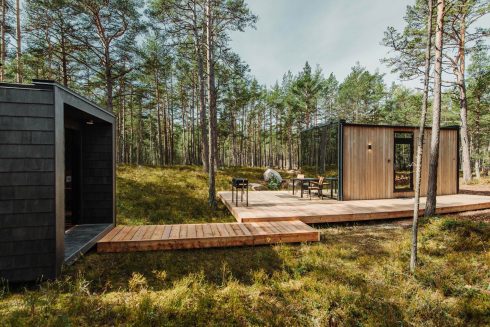
The tiny house movement has gained more momentum in the last decade, but why? It is based on tiny living: owning less so that what you own doesn’t own...

In 2022, the global megatrend of sustainable architecture and building practices will continue. Architecture trends influence the choice of materials both...
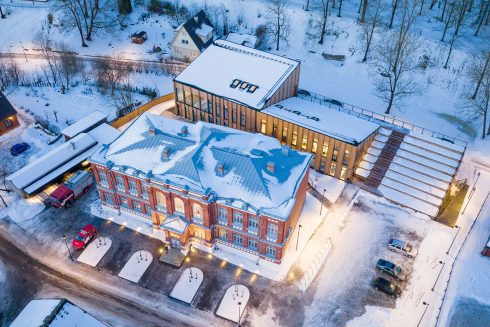
BENCHMARK THERMO-PINE CLADDING C4 20x115 / 26x 115, DECKING D4 26x115
ESTONIA
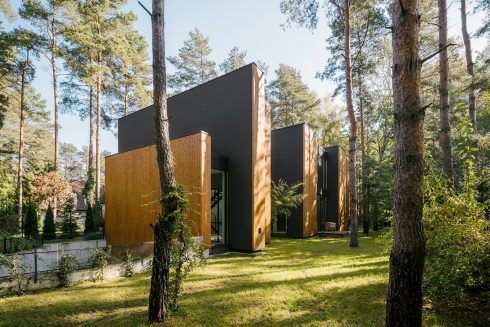
BENCHMARK THERMO-PINE
POLAND
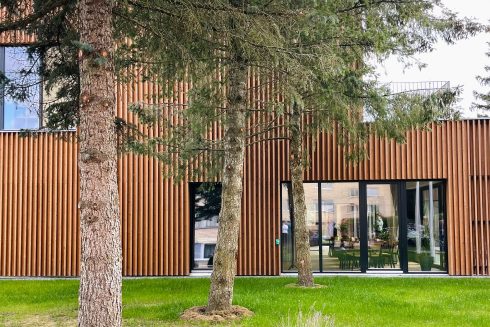
BENCHMARK THERMO-PINE
LITHUANIA

THERMORY THERMO-PINE MIX & MATCH CLADDING
NORWAY
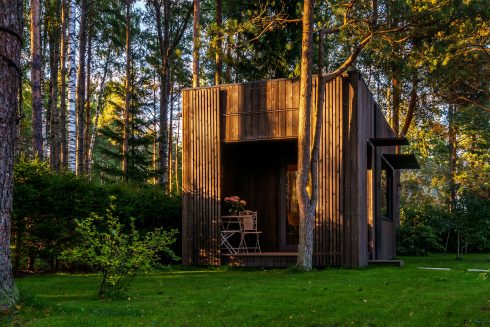
THERMORY BENCHMARK THERMO-SPRUCE BRUSHED CLADDING, THERMO-ASH DECKING AND FLOORING
ESTONIA
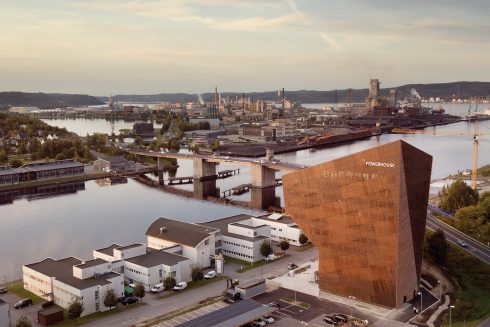
THERMORY BENCHMARK THERMO-PINE CLADDING C4
NORWAY
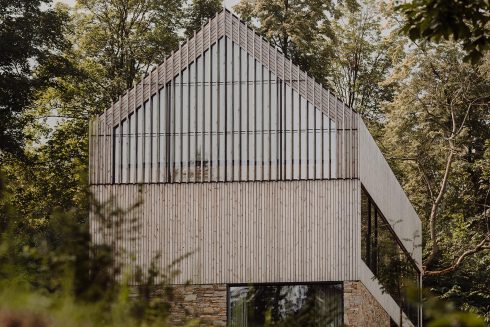
THERMORY BENCHMARK THERMO-PINE CLADDING AND ROOFING
POLAND
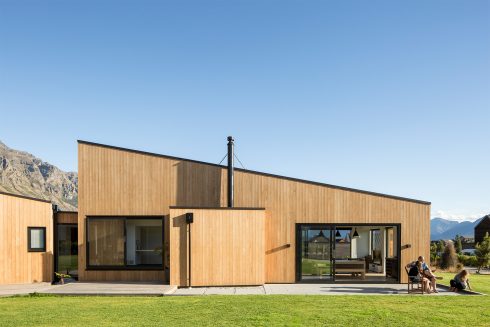
THERMORY BENCHMARK THERMO-RADIATA PINE CLADDING C3
NEW ZEALAND
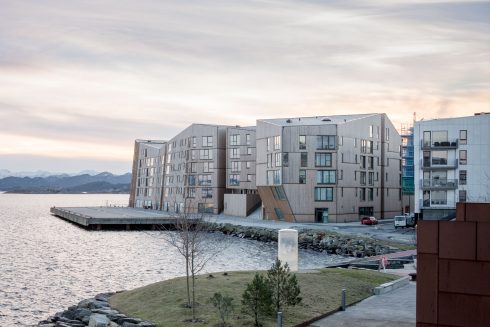
THERMORY BENCHMARK THERMO-PINE CLADDING C3 20X115 MM, ROOFING C10 20X140 MM AND DECKING D4 SG 26X140
NORWAY

THERMORY BENCHMARK THERMO-PINE CLADDING C8 26X140 MM
NEW ZEALAND
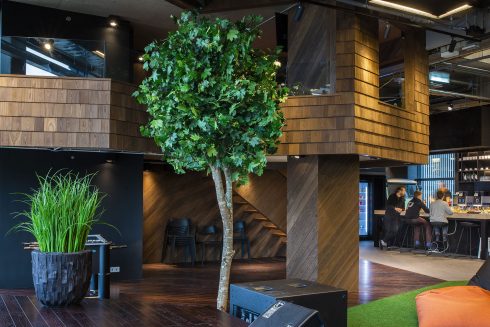
THERMORY BENCHMARK THERMO-ASH AND THERMORY SHINGLES WALL PANELLING
ESTONIA

THERMORY BENCHMARK THERMO-ASH CLADDING C5 20X72/140/190MM, BRUSHED AND THERMO-ASH MEDIUM FLOORING F5 18X245
ESTONIA